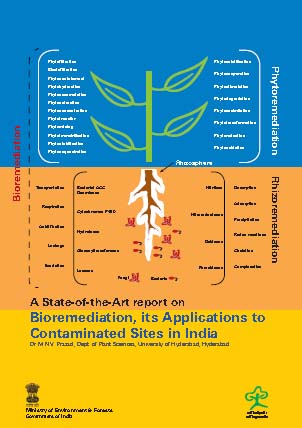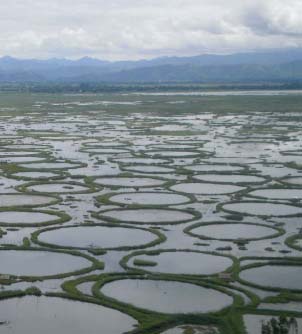 Bioremediation is emerging as an effective innovative technology for treatment of a wide variety of contaminants and is an invaluable tool box for wider application in the realm of environmental protection.
Bioremediation is emerging as an effective innovative technology for treatment of a wide variety of contaminants and is an invaluable tool box for wider application in the realm of environmental protection.
Bioremediation approach is currently applied to contain contaminants in soil, groundwater, surface water, and sediments including air. These technologies have become attractive alternatives to conventional clean-up technologies due to relatively low capital costs and their inherently aesthetic nature.
It includes phytoremediation (plants) and rhizoremediation (plant and microbe interaction). Rhizoremediation, which is the most evolved process of bioremediation, involves the removal of specific contaminants from contaminated sites by mutual interaction of plant roots and suitable microbial flora.
The report documents the existing knowledge for the benefit of regulators, who evaluate the quality of environment and for practitioners, who have to implement and evaluate remediation alternatives at a given contaminated site. It is expected to provide basic understanding of the bioremediation mechanisms to the reader. The technical descriptions provided in this document concentrate on the functioning mechanisms: phytosequestration, rhizodegradation, phytohydraulics, phytoextraction, phytodegradation, and phytovolatilization.
The scope of environmental bioremediation extends to -
- Inorganics viz., Arsenic, Mercury, Chromium, Fluoride, Cyanide, abandoned mines, fly ash disposed sites, engineered phytotreatment technologies, biological permeable barriers; and
- Organics viz., petroleum hydrocarbons, pesticides and explosives.
Constructed wetlands are the result of human skill and technology integrating geology, hydrology and biology. People have built and operated constructed wetlands to treat wastewater since ancient times.

Loktak lake (Ramsar site) in Manipur showing characteristic Phumdis (floating islands). This water body is serving as receptacle for sewage and agrochemicals. The various aquatic plants are playing a major role in phytosanitation and bioremediation.
Mining industries release a variety of waste including abandoned mines and drill cuttings and fluids of fossil fuel exploration. All these constitute as hazardous waste and pose potential public health or environmental risk. Environmental rehabilitation of abandoned mines in India would involve monitoring effluent treatment systems and would need a legislative framework for environmental rehabilitation of abandoned mines and maintenance and long-term monitoring.
The proactive role of MoEF and industries for implementing bioremediation and envisaged action plan are discussed in the report. Institutions involved in bioremediation research, frequently asked questions and glossary of terms used in bioremediation are also presented in annexures.
The report can be downloaded below -





 Bioremediation_its_applications_to_contaminated_sites_in_India_MoEF_2011.pdf
Bioremediation_its_applications_to_contaminated_sites_in_India_MoEF_2011.pdf







